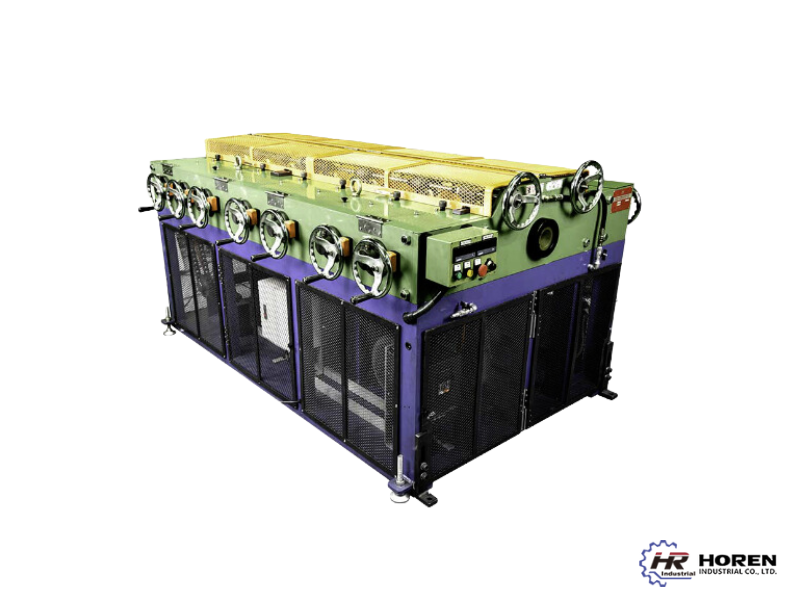
Types of Straightening Machine
In the vast landscape of metalworking machinery, straightening machines play a pivotal role in refining the material's shape, ensuring it meets precise straightness standards. Among the plethora of options, bar and tube straightening machines stand out for their critical function in preparing materials for further processing or final use. This article delves into the different types of straightening machines, with a special focus on the innovative bar and tube straighteners developed by our esteemed company.
The Essential Role of Straightening Machines
Straightening machines correct deformities in metal bars, tubes, and various profiles, resulting in materials that are perfectly aligned and ready for application in construction, automotive manufacturing, aerospace engineering, and more. These machines employ various methods to achieve desired outcomes, ranging from roller straightening to press straightening, each suitable for different types of materials and degrees of precision.
Types of Straightening Machines
1. Roller Straightening Machines
- Bar and Tube Straighteners: Utilize a series of rollers positioned in specific angles to gradually straighten bars or tubes. These machines can be designed for both round and shaped materials and are effective for materials of various diameters.
- Sheet Metal Straighteners: Aimed at flattening sheet metals, these machines feature rollers arranged in two planes. They are essential in industries where sheet metal is used for manufacturing parts, ensuring material flatness and uniformity.
2. Rotary Straightening Machines
Rotary straighteners are predominantly used for precision straightening of round bars and tubes. They work by bending the material around sets of rollers arranged in a helical pattern, correcting imperfections through rotation and controlled pressure. This method is particularly suited for high-speed straightening of long products.
3. Press Straightening Machines
These machines use hydraulic or mechanical presses to apply direct pressure at specific points along the material to correct bends and distortions. Press straightening is often used for components with irregular shapes or for materials that require precise localized straightening, such as large metal plates or complex profiles.
4. Two-roll Straighteners
Two-roll straighteners, also known as "duo" straighteners, employ two opposed rolls to flex the material back and forth, removing curvature through a series of incremental adjustments. This type is particularly effective for thick bars and heavy sections, offering good control over the straightening process.
5. Multi-roll Straighteners
These machines use multiple rolls, often in a staggered configuration, to straighten materials. The multi-roll approach is effective for both flat and shaped products, providing high precision and the ability to adjust for various degrees of straightness requirements.
6. Stretch Straightening Machines
Stretch straighteners apply tension to the material until it yields slightly, removing bends and twists. This method is especially useful for materials that are prone to warping during heat treatment or machining. Stretch straightening is commonly used for aerospace components and precision manufacturing where the highest degree of straightness is required.
7. Heat Straightening Machines
Heat straightening involves applying localized heat to a deformed area of metal, followed by controlled cooling. This process can correct distortions without significantly altering the material's properties. It's commonly used for structural steel components that have warped due to welding or other heat-intensive processes.
Each type of straightening machine offers unique advantages and is suited for specific applications, materials, and industry requirements. The choice of machine depends on the material type, required straightness precision, production volume, and the specific characteristics of the material being straightened.
Highlighting Our Bar and Tube Straightening Machine
Our company's bar and tube straightening machine exemplifies engineering excellence, tailored to meet the stringent demands of modern manufacturing processes. Here are the standout features and functionalities of our machine:
- Horizontal Staggered Design: Utilizing a multi-wheel rolling and extrusion adjustment method, our machine corrects material straightness with unmatched precision. This design ensures uniform pressure distribution across the material, minimizing stress concentrations and potential damage.
- Precision Scale Equipped Rollers: Each roller is equipped with a precision scale, documenting the correction position of the wheels. This feature facilitates rapid setup adjustments, significantly reducing downtime and enhancing operational efficiency.
- Variable Frequency Drive (VFD): The inclusion of a VFD allows for the speed adjustment of the machine to accommodate various material specifications. This versatility ensures optimal straightening performance across a wide range of metals.
- Integration with Automated Handling Systems: Our straightening machine can be seamlessly integrated with automatic loading, feeding, and unloading systems, promoting a fully automated workflow. This integration significantly enhances productivity and reduces manual labor requirements.
- CNC Model with Operational Data Recording: The CNC model of our straightener offers detailed operational data recording and reference values for operators. Adjustments to the wheel spacing necessary for straightening are easily made via a user-friendly human-machine interface (HMI), ensuring precise control over the straightening process.
Complementary Processes and Applications
Our bar and tube straightening machine is designed to complement a variety of related manufacturing processes, including cold drawing, bending, machining (e.g., lathes), cutting, and packaging and transportation. By integrating our straightening technology into your production line, you can enhance the efficiency and quality of these subsequent processes, ensuring that your products meet the highest standards of straightness and integrity.
Conclusion
Straightening machines are indispensable in the metalworking industry, and our bar and tube straightening machine represents the pinnacle of this technology. With its advanced features and capabilities, it sets new standards for efficiency, precision, and ease of use. Whether you're involved in construction, automotive, aerospace, or any sector requiring perfectly straight metal bars and tubes, our machine offers the solution you need to achieve optimal results. By embracing our innovative straightening technology, manufacturers can look forward to a future where material perfection is the norm, not the exception.